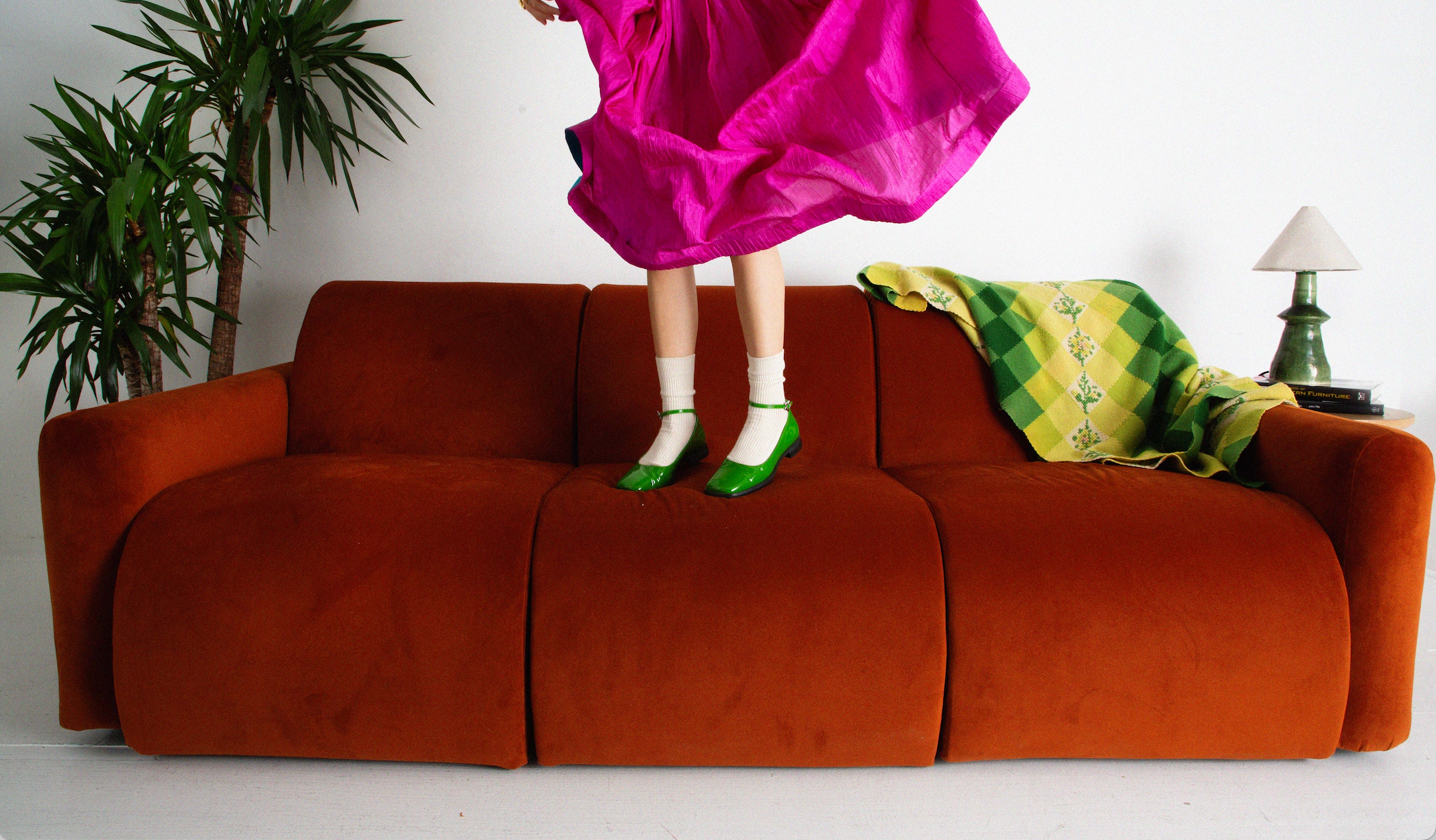When Amanda Beare moved to New York, she was shocked by how much furniture she saw on the curb for trash pickup. When she read that approximately 12 million tons of furniture is discarded by Americans annually, it hit home. “I just felt like there was a better solution to avoiding all of this waste,” she says.
Her alternative: Retroloop, a newly launched DTC furniture brand aimed at the rising generation. With no experience in the home industry, Beare might seem like an unlikely person to take on the problem of furniture waste—and producing more furniture might seem like a funny way to go about it—but several factors led her down this path. At the time she hatched the idea for Retroloop, she was a graduate student at Columbia Business School and entrepreneurialism was in the air. Having grown up in North Carolina, she was familiar with the domestic furniture trade and possessed an appreciation for good-quality pieces. And during her previous career in finance, she had worked on investing in renewable energy. “I’ve always had an interest in furniture design, and I really wanted a mission-oriented career after graduate school,” she says. “It’s the nexus of those two desires and passions of mine.”
Beare imagined a direct-to-consumer, built-on-demand brand with a closed-loop model made from “recycled, regenerative, nontoxic and natural” materials. But bringing those principles to life meant finding new supply chains and rethinking how a furniture business worked.
“I really had to [take on] the learning curve in terms of understanding what those materials were, what they looked like, and if they could even be applicable to the pieces that I wanted to design,” she says. The entrepreneur enrolled in Parsons School of Design’s online certificate program in Sustainable Building Materials to educate herself about the materials she would be sourcing for her brand; she also attended the Furniture Manufacturing Expo in Hickory, North Carolina, last summer, where she met with suppliers to learn about their products and materials.
The results of her research are apparent in the brand’s initial assortment of furniture, which is being made less than 100 miles away in High Point. Furniture frames are made of FSC-certified plywood instead of industry-standard particleboard. And though she had hoped to use natural latex foam, Beare settled on CertiPUR-US, which, while still petroleum-based, is screened for flame retardants and formaldehyde and is domestically made. In place of the typical seat deck, Retroloop’s products feature Cocolok, a bio-based material she learned about through the Parsons Healthy Materials Lab. In lieu of conventional poly batting, she has chosen Responsible Wool Standard–certified wool, also sourced domestically. For the upholstery, she settled on a poly velvet made of 100 percent postconsumer recycled plastic. (She hopes someday to find a way to use natural fiber textiles economically.) It’s not a perfect picture of sustainability, but it’s a valiant effort—especially considering the price point, with a chair for $900 and a three-seat sofa for $2,600.
Beare wanted the design of the furniture to be sustainable as well, so she worked with a student at Pratt to develop the Retroloop look, which draws on the conversation pits of the 1970s. More important than the particular aesthetic, Beare wanted the furniture to be modular to evolve alongside the younger customer base she’s hoping to target. “If you need to downsize or upsize, you can just add another unit; you don’t have to completely dispose of the piece,” she explains. Optional additional slipcovers and replacement parts will also hopefully extend the life of the pieces.
In addition to her exacting materials sourcing, Beare made sure that her furniture was designed with staples and nails—not glue—so that it could hypothetically be disassembled and recycled in the future, which would fulfill her dream of closed-loop manufacturing. (At this time, there is no system in place to harvest and recycle the materials when a sofa reaches the end of its life.)
After raising funds in a “friends and family” round, Retroloop officially debuted on May 21. It’s early days, but Beare is bursting with ideas on how to make her company more sustainable, including plans for a future buyback program, textile recycling, BIFMA emissions testing, and B Corp certification, which she says is already in the works. “We want to be as transparent as possible, and we want to solicit feedback from our customers,” she adds. “We know we’re not perfect, but we want to do the best we can.”
____________
Laura Fenton is a writer with a special interest in the intersection between homes and sustainability, and is the author of the Living Small newsletter and two interior design books, The Little Book of Living Small and The Bunk Bed Book. She has written about home and design for nearly 20 years, and her work has appeared in many outlets, including Better Homes & Gardens, House Beautiful, Real Simple, and The Washington Post, as well as online publications and regional design magazines.





























